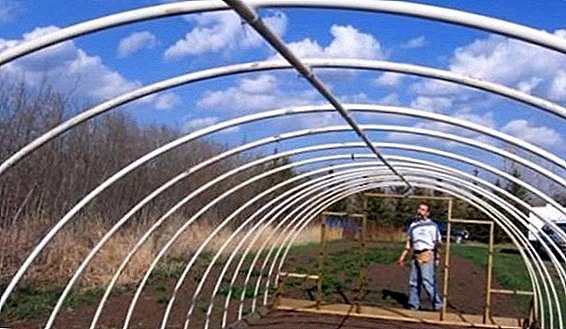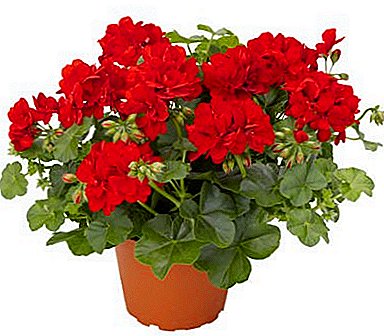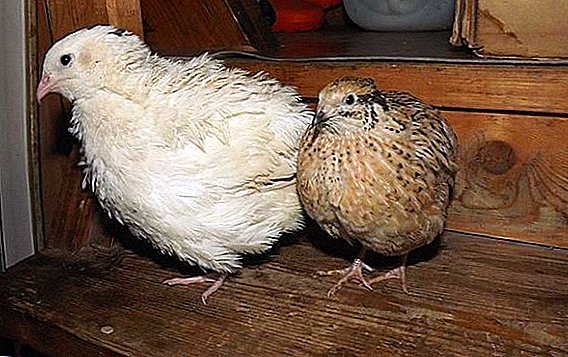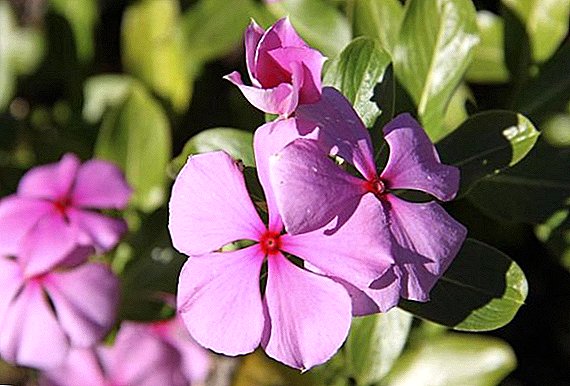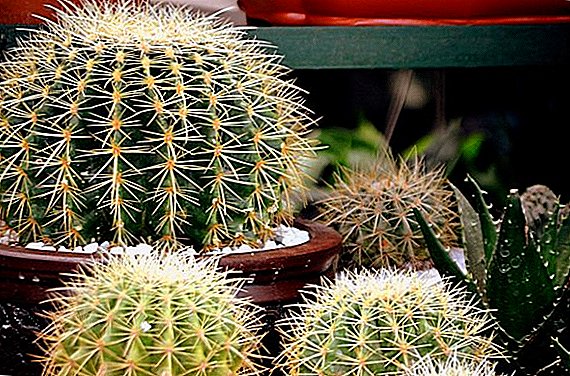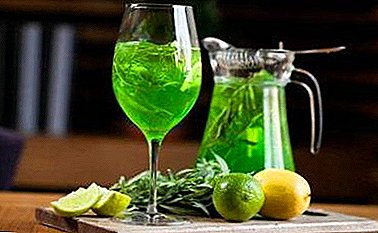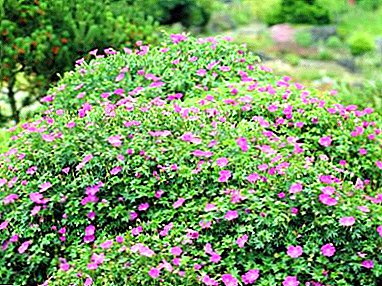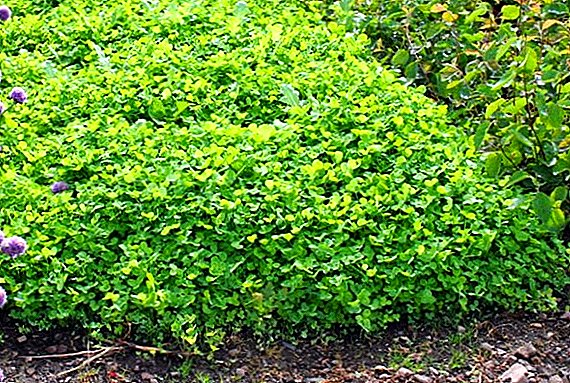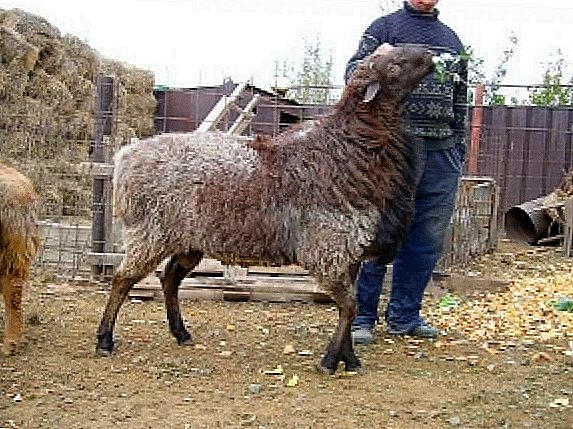 Sheep is the most common animal in Kazakhstan, which for centuries has been bred by nomadic people in these territories. Not only love for sheep and their meat, but also the ability to breed and breed new breeds was transmitted to modern Kazakhs.
Sheep is the most common animal in Kazakhstan, which for centuries has been bred by nomadic people in these territories. Not only love for sheep and their meat, but also the ability to breed and breed new breeds was transmitted to modern Kazakhs.
Even in the century before last, due to the efforts of livestock breeders, a very unusual breed of edilbayevsky sheep appeared, which is still considered one of the best breeds of meat and grease productivity. But this is not the only advantage of animals, and we have devoted a whole article to the enumeration of all of them, which we advise you to read.
What are the main features and advantages of edilbayevsky sheep over other breeds: reveal all the secrets
Representatives of the edilbayevskoy breed of sheep are the result of popular selection, which proved to be very successful. Its homeland is semi-desert steppe pastures of modern Kazakhstan, where it was simply not possible to maintain and breed any other cattle, except for such adjustable and hardy sheep as the described breed.
Their parents are Kazakh fat-tailed ewes, which were fertilized to the families of sheep of the large Astrakhan coarse-haired breed. The resulting breed inherited from the first the ability to accumulate large quantities of fat tissue in the area of the rump, and from the second - their wool characteristics. Also, both parental forms made a new breed well adapted to the conditions of nomadic animal husbandry.
What characteristics are famous representatives of the breed: the advantages of edilbayevsky sheep
 Endurance is the main advantage of these beautiful animals. After all, the ability is all year round free grazing, roasting in the sun in summer, and exposed to frost temperatures in winter, not all sheep breeds are capable.
Endurance is the main advantage of these beautiful animals. After all, the ability is all year round free grazing, roasting in the sun in summer, and exposed to frost temperatures in winter, not all sheep breeds are capable.
Representatives of the edilbayevsky breed, besides indifference to similar negative effects of weather conditions, are also capable of being in continuous motion.
Poor pastures of the Kazakh steppes made it impossible to graze in one place, and in search of food they had to travel very long distances every day. But nevertheless, it practically was not reflected in live weight. Due to the unusual morpho-physiological structure of the body, as well as the peculiarities of the digestive system, animals can even put on fatty tissues on coarse and non-nutritious food, constantly increasing their weight.
For nomadic peoples, this was a very important value, in consequence of which the breed today is the most common and popular among professional livestock breeders who prefer the use of an extensive type of sheep breeding.
Another factor by which the edilbayev sheep are very resilient is their very strong constitution and proper physique. This greatly contributes to the ability to graze flocks on large pastures. A well-developed fat tail helps to withstand a large amount of time without food, providing animals with the necessary energy.
But, this is not all the advantages that the breed can boast of. It is ahead of many representatives of its type and the quality of wool, and performance. In particular, to edilbayevsky sheep it is characteristic:
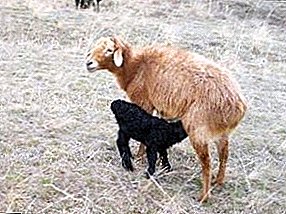 The meat productivity of the sheep described is quite high, since adult rams are easily able to reach a weight of 100 kilograms. Such a high rate is not always characteristic of sheep, which usually have a small torso.
The meat productivity of the sheep described is quite high, since adult rams are easily able to reach a weight of 100 kilograms. Such a high rate is not always characteristic of sheep, which usually have a small torso.- The milk production of these animals is highly valued, since the high fat content of their milk allows them to produce dairy products, which are popular in Central Asian countries. For owners of edilbayevsky sheep, dairy products are an additional source of income.
- Wool from sheep of this breed is cut at least 2 times a year. Its quality is quite high and allows you to make wool fabrics.
- Animals grow very quickly, gaining weight and increasing the size of the body. This is especially important when sheep are going to be slaughtered at a young age, since meat productivity is very profitable in terms of time and cost. Rapid growth also affects faster sexual maturation of individuals, which positively affects the reproducibility of sheep.
Negatives and difficulties of breeding
Since we do not want to be biased, it is worth paying your attention to some of the shortcomings of edilbayevsky sheep. First of all, this is the fact that, despite the precocity, the overall fertility of these animals is not so high. In one litter, only one lamb is usually born. On average, the fecundity of ewes is only 110-120%.
Of course, such a feature of the breed is quite practical in its customary conditions of detention: lambs are born quite large in size, much easier and faster to adapt to the wanderings, along with the entire flock. But for a shepherd who wants to increase the livestock as soon as possible, this feature is a significant disadvantage.
Regarding wool, it is also worth making a remark: at least from one individual it can be obtained a very large amount, but it is very tough. The fact is that it consists of a very large number of transitional hair and spine. But although it is not the best in quality, the quantitative factor prevails here.
 You should also pay attention to the fact that the edilbayevsk sheep breed is presented in three colors: black, red and brown. At what, it is worth paying attention to this characteristic, since the productivity of an animal directly depends on the suit.
You should also pay attention to the fact that the edilbayevsk sheep breed is presented in three colors: black, red and brown. At what, it is worth paying attention to this characteristic, since the productivity of an animal directly depends on the suit.
The best considered to be individuals that have a black suit. In particular, in comparison with other representatives of the breed, they have 7.5-11.8% large volumes of trimmed wool, and 2.2-6.9% more live weight. Also, the characteristics of brown sheep are quite high. The least productive are individuals with red color.
Caring for the breed also presents some difficulties for the sheep breeders, since they are grown in one limited area and in the same climate and do not tolerate pastures where there is a wet or wetland area. It is even better to graze them on the ground, where there is practically no food, than in conditions with high humidity. Dampness can cause animal diseases, and as a result - a decrease in productivity and mortality.
Description of the features and external characteristics of representatives of edilbayevsky sheep
One of the features of the breed is their komolost, or hornlessness. Moreover, neither ewes nor rams have horns. While grazing animals on open pastures, this is a significant drawback, since animals do not have the opportunity to defend themselves against wild animals, in home keeping it is, on the contrary, a great advantage. After all, komolye rams show less aggressiveness both to each other and to the owners who look after them.
In order to more precisely understand which animals we are talking about, it is necessary to indicate their main parameters (for ewes and rams):
- In withers, the height of animals in the average is from 75 to 84 centimeters.
- The indicator of slanting body length can vary from 77 to 82 centimeters.
- Chest circumference is 97-106 centimeters.
In terms of mass, representatives of different genders differ more. So, if for an ordinary ram raised extensively, the average weight is 110-120 kilograms, then for the same ewe, 65-70 kilograms will be considered normal. But the best representatives of the breed on a good pasture can gain much more weight: sheep - up to 150-160 kilograms, and ewes - up to 90-100 kilograms.
Lambs are born rather large, because, as we have already mentioned, litters in ewes are few. The weight of the sheep is about 6 kilograms, and bright - 5,3. By the age of 1.5 years, the first gain weight up to 80 kilograms, and the second to 65. With good feeding, the average daily gain is usually 200-250 grams. However, youngsters are often allowed to be slaughtered at the age of 4 months, when the carcass's weight is 20-14 kg, and the fat tail - about 3.5 kg. The meat of animals at this age is especially nourishing and tender.
What benefits does the breeding of edilbay sheep: all about the productivity of the breed
 Sheep are very rarely bred for aesthetic reasons, and especially such inconspicuous ones as the breed described. The main goal of any sheep-dog is to obtain valuable meat, sheep fat, wool and sheep skin. Their milk has great value.
Sheep are very rarely bred for aesthetic reasons, and especially such inconspicuous ones as the breed described. The main goal of any sheep-dog is to obtain valuable meat, sheep fat, wool and sheep skin. Their milk has great value.
Meat quality fat-tailed sheep of this breed immediately overcomes any competition, because it refers to the meat-greasy type. Such sheep have always been considered the most valuable for meat. But it improves the quality of the ability of animals to feed on ordinary pasture without adding other feed. Because of this, it acquires a special taste and excellent biochemical characteristics.
We have repeatedly mentioned above that the described breed of sheep is considered to be one of the largest in size. Therefore, meat productivity is at the highest level: one carcass of a well-fed adult waluh can weigh from 40 to 45 kilograms. At the same time, the amount of fat tail fat of one individual can be 12-14 kilograms. In general, the slaughter yield of meat and fat together is 50-55%.
Lamb meat is considered to be more valuable. After all, it is not only very gentle, but also contains the minimum amount of fat. However, in the case of sheep breeds of sheep, to which the animals described by us belong, this is of no particular significance. After all, all the fat in them is deposited in the back of the body, and the meat remains almost as tasty and dietary as in young individuals, only with age it becomes more rigid.
Performance wool or what value is sheepskin edilbayevsky sheep?
Regarding this aspect of the productivity of representatives of the breed, it is worth noting the following possible numbers of hair cut (when shearing 2 times a year): an average of 3-3.5 kilograms of wool are produced from one ram, and up to 5 kg from the largest in size; The wool productivity of females is 2.3-2.6 kilograms. A great feature of the breed is wool structure:
- From 52 to 56% of fluff.
- 16-19% of transient hair.
- 24-28% spine.
Dead hair in sheepskin is very rare and not all individuals.
Milk productivity of the described breed
The sheep of the Edilbaevskaya breed are distinguished by a very high milkiness. On average, their productivity is 150-155 liters of milk for a period of one lactation, although fluctuations can reach both 124 liters and 184.
 Of course, for sheep, this figure is very high. It should be noted that sheep's milk is considered very useful for humans, because it contains not only a large amount of fat (approximately 6.7% with fluctuations from 3 to 9%), but also protein (5.8%). Also, in comparison with the cow, it is quite sweet, since the sugar content in it is 4.6%. Also, it contains the following vitamins and minerals:
Of course, for sheep, this figure is very high. It should be noted that sheep's milk is considered very useful for humans, because it contains not only a large amount of fat (approximately 6.7% with fluctuations from 3 to 9%), but also protein (5.8%). Also, in comparison with the cow, it is quite sweet, since the sugar content in it is 4.6%. Also, it contains the following vitamins and minerals:
- Vitamins A and C.
- Iron.
- Calcium.
- Manganese.
- Copper.
- Phosphorus.
- Zinc.
Fresh milk of the described sheep is not usually used, but is sent to produce various dairy products. In particular, Ayran sour milk, made from the milk of edilbayevsky sheep, as well as such cheeses as primichi and kurt, are very famous. Make from it and butter.
Breeding edilbayevsky sheep at home: what kind of care do you need to provide animals?
It is clear that animals perfectly adapted for the nomadic way of life practically do not need any additional care. After all, they may well be free grazing all year round with minimal supervision (if the pasture is well fenced). But all this is suitable only for the climate of the Kazakh steppes. If you live in colder regions, you will definitely have to take care of special covered pens for sheep flocks. Requirements for paddock or shed are as follows:
Edilbaev sheep accustomed to the movement, so the place for them in the pen needs to take a lot. After all, with very close maintenance of strong and muscular animals, some muscles can start to atrophy, immunity decreases, diseases start to manifest. Especially the movement is important to young lambs.
The corral must necessarily include the possibility of sheep walking in the open air. Such walks should be done for animals every day, regardless of weather conditions.
It is necessary to build the premises of the pen in such a way that it does not have drafts, there is always a warm and dry floor. It is also important that the air temperature even in the most severe frosts does not fall below 8ºС.
From the earliest spring and until the beginning of the first frost, edilbayevsky sheep were kept on pastures. They should also be as spacious as possible. Animals will be able to find food themselves, the main thing is that they have a place to walk. In the absence of large areas of land with good grass, animals are also fed in summer.
Regarding the mandatory aspects of caring for the described breed, many sheep breeders call bathing individuals. This is done to ensure that they do not appear scabies, and the wool was clean and not loose. Do it in the warm season, so that the sheep do not catch cold. For bathing it is important to use disinfectant solutions. Also, several times a year, sheep need to trim and clean the hooves. This will prevent the occurrence of such a disease as “hoof rot”.
How to feed edilbaevsky sheep: aspects of proper diet
 Feeding this breed is the simplest thing, because animals eat unpretentious food and can provide themselves with it independently when grazing on pastures. But most of all for their gastrointestinal tract suited juicy, coarse and concentrated food, which is important to consider when feeding in the winter. During this period, animals are fed with hay, straw, silage, compound feed, concentrates and salt. Also, it is important not to forget about vegetables and water.
Feeding this breed is the simplest thing, because animals eat unpretentious food and can provide themselves with it independently when grazing on pastures. But most of all for their gastrointestinal tract suited juicy, coarse and concentrated food, which is important to consider when feeding in the winter. During this period, animals are fed with hay, straw, silage, compound feed, concentrates and salt. Also, it is important not to forget about vegetables and water.
In the summer, it is important to additionally give the sheep mineral salts, which their body needs very much. But in the fall it is good to include in the diet of roots - potatoes, beets. You can also give peas without forgetting about hay and water.


 The meat productivity of the sheep described is quite high, since adult rams are easily able to reach a weight of 100 kilograms. Such a high rate is not always characteristic of sheep, which usually have a small torso.
The meat productivity of the sheep described is quite high, since adult rams are easily able to reach a weight of 100 kilograms. Such a high rate is not always characteristic of sheep, which usually have a small torso.